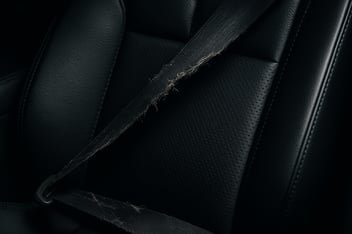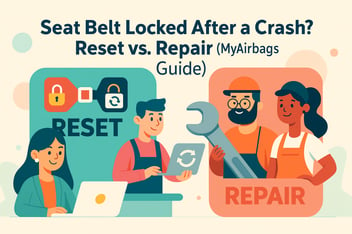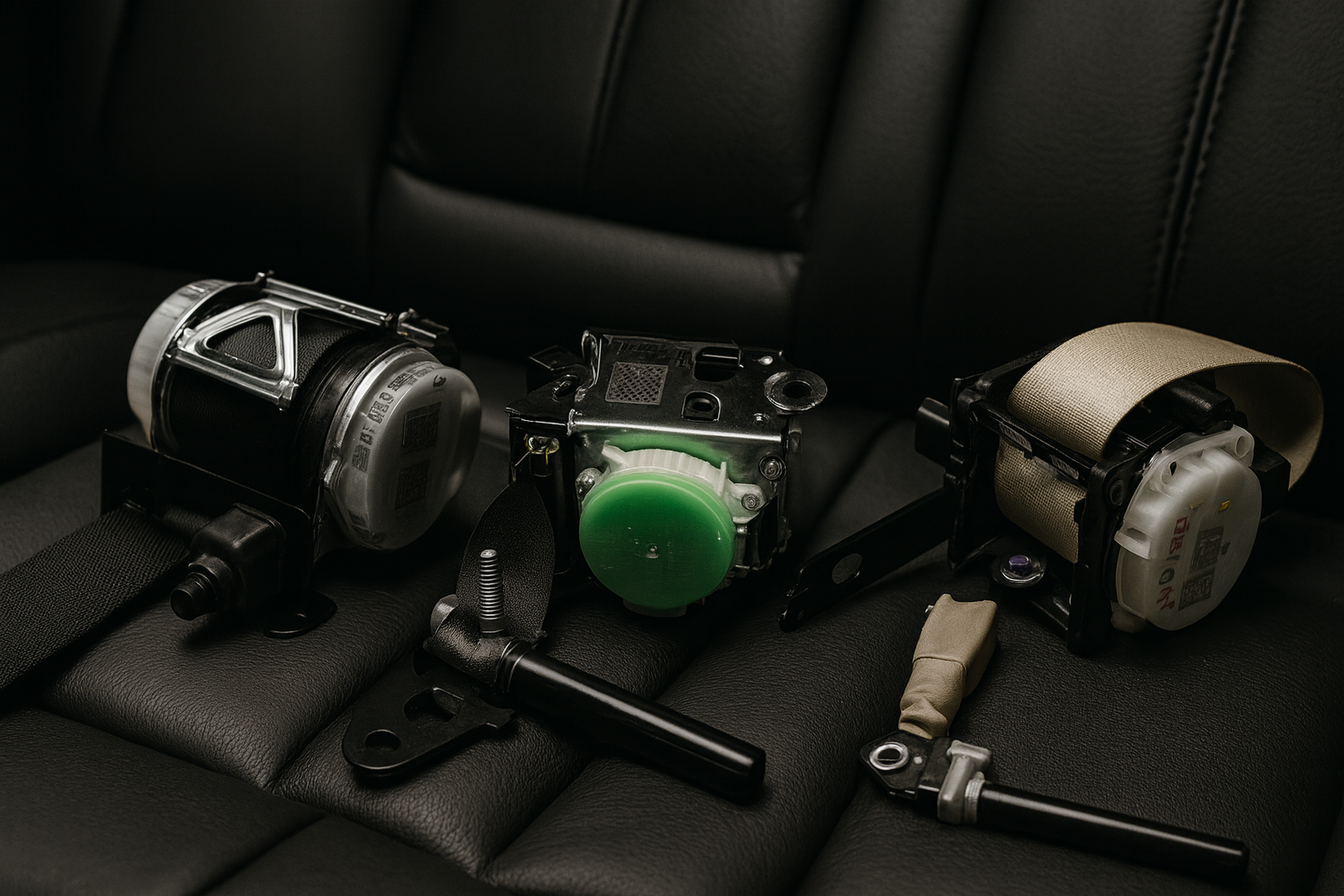
You’ll find seat belt systems ranging from single-stage and dual-stage units to triple-stage designs—and, in newer models, complex multi-stage configurations and rear inflatable belts. Each style uses its own connectors, mounting points, and service requirements, all of which affect how the system is handled during repair or replacement.
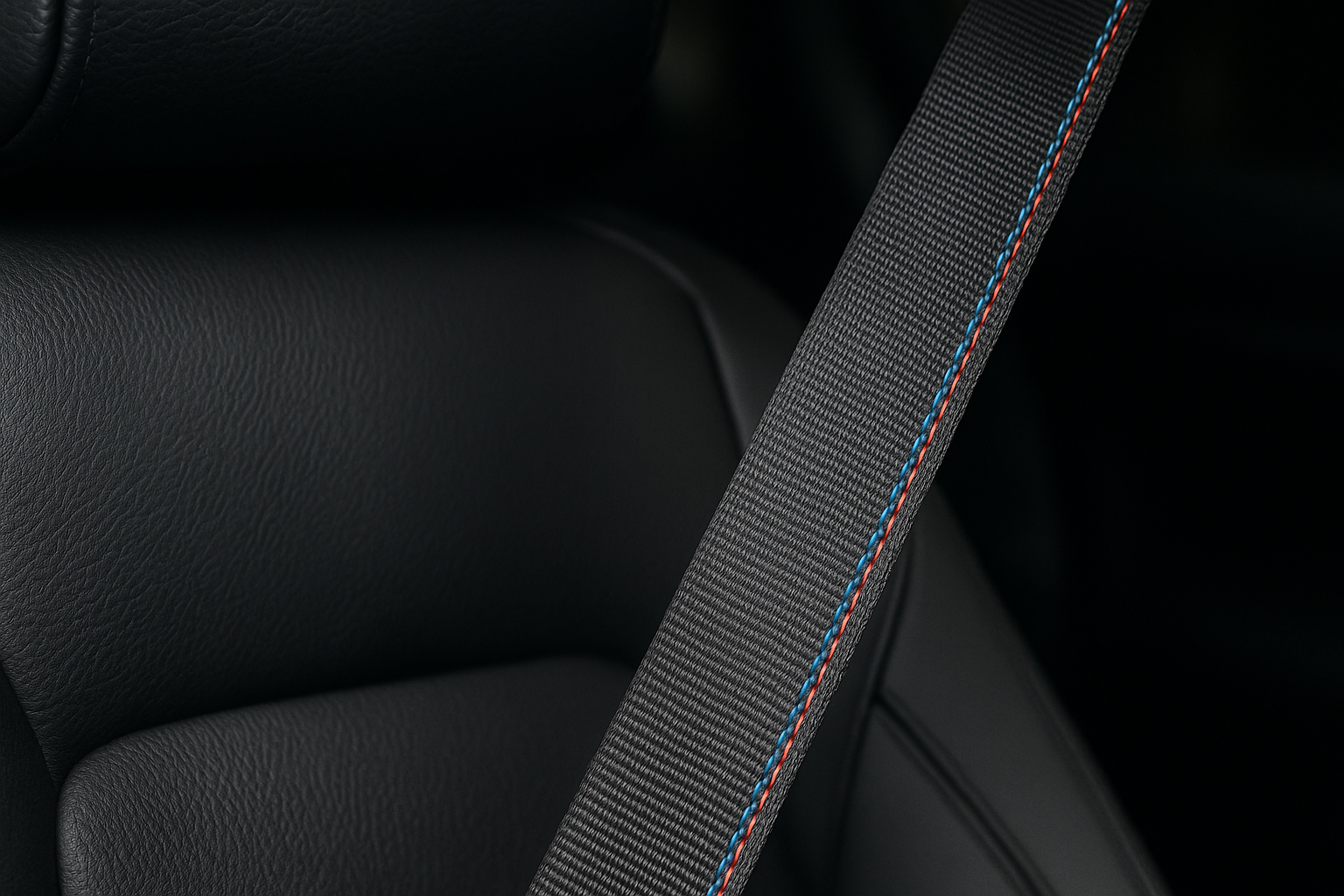
Single-, Dual-, Triple-Stage & More
When a seat belt locks after a collision, retracts slowly, or your SRS/seat-belt warning light stays on, you’re dealing with a safety-critical system—not a cosmetic issue. And before you choose repair vs. replacement, you need to know what type of belt you have. Modern vehicles use different “stages” of pretensioners (the parts that tighten the belt during a crash): single-stage, dual-stage, triple-stage, and in some newer applications, even multi-stage setups and rear inflatable belts. Each type has its own plugs, locations, and service implications.
At MyAirbags, we repair all common belt types—from single to triple stage—including buckle and anchor pretensioners and webbing replacement, typically with fast turnaround once received. That means you can keep your original hardware, save money, and get back on the road quickly.
Needhelp now? Start a MyAirbags seat belt repair order
What “Stages” Mean (and How to Spot Yours)
Single-Stage Seat Belt (1 plug / 1 charge)
-
One pretensioner (usually at the retractor) and a single electrical connector.
-
Common after many collisions: retractor locks or webbing won’t retract properly.
-
MyAirbags rebuilds single-stage retractors and can replace webbing if needed.
Dual-Stage Seat Belt (2 charges / often 2 plugs total)
-
Typically a retractor pretensioner plus an anchor or buckle pretensioner.
-
Wiring can be arranged as two plugs at the retractor, or one plug at the retractor + one at the lower anchor/buckle depending on model.
-
Dual-stage belts provide a stronger, staged pull-down in a crash.
Triple-Stage Seat Belt (3 charges / 3 plugs)
-
Combines a dual-stage retractor with an additional pretensioner (often at the anchor/buckle).
-
You’ll see three electrical ports/plugs across the assembly.
-
MyAirbags services triple-stage units as part of its standard program.
Inflatable & Multi-Stage Systems (special cases)
-
Some manufacturers (e.g., Ford rear inflatable belts) integrate an airbag into the belt to spread crash forces across a wider area; these are model-specific and typically rear-seat only.
-
Newer vehicles may use more complex staging with multiple pretensioners and load-limiters.
Quick ID tip: Count the electrical plugs, and note where pretensioners live (retractor, buckle, anchor). If uncertain, send photos with your order—MyAirbags will confirm the type before repair.
Common Symptoms (Across All Types)
-
Belt won’t retract or is slow/sticky
-
Belt locks randomly or won’t lock on a sharp tug
-
Clicking/grinding from the retractor
-
SRS/seat-belt light remains on after a crash
-
Webbing damage: frays, cuts, heavy staining, mold/mildew (webbing must be replaced—washing doesn’t restore strength)
MyAirbags repairs pretensioners (retractor/anchor/buckle) and replaces webbing with OEM-grade materials, then tests for proper lock, retraction, and electrical continuity before shipping back.
How Seat Belts Evolved (Why Staging Matters)
Early systems used a single charge; later designs added a second and third pretensioner to pull down slack more precisely and coordinate with airbags. Some platforms introduced inflatable rear belts to spread load across the torso. Staging and features vary by make/model, but the goal is the same: optimize restraint for different crash severities and occupants.
| Symptom | Likely cause | What MyAirbags services |
|---|---|---|
| Slow/weak retraction | Tired retractor spring, internal friction, contamination | Recondition mechanism; renew spring tension; replace webbing if needed |
| Locks randomly / won’t lock on tug | Damper/spool wear; path misalignment; pawl wear | Rebuild locking mechanism; correct belt path; test instant lock |
| SRS light after crash | Fired pretensioner(s) or circuit fault | Rebuild pretensioner(s); verify resistance/continuity |
| Clicking/grinding | Corrosion/debris/worn teeth | Disassemble/clean; replace worn components; QC for smooth travel |
| Webbing damage/mildew | Fiber degradation (unsafe) | Replace webbing (color options where applicable); certify pull/lock |
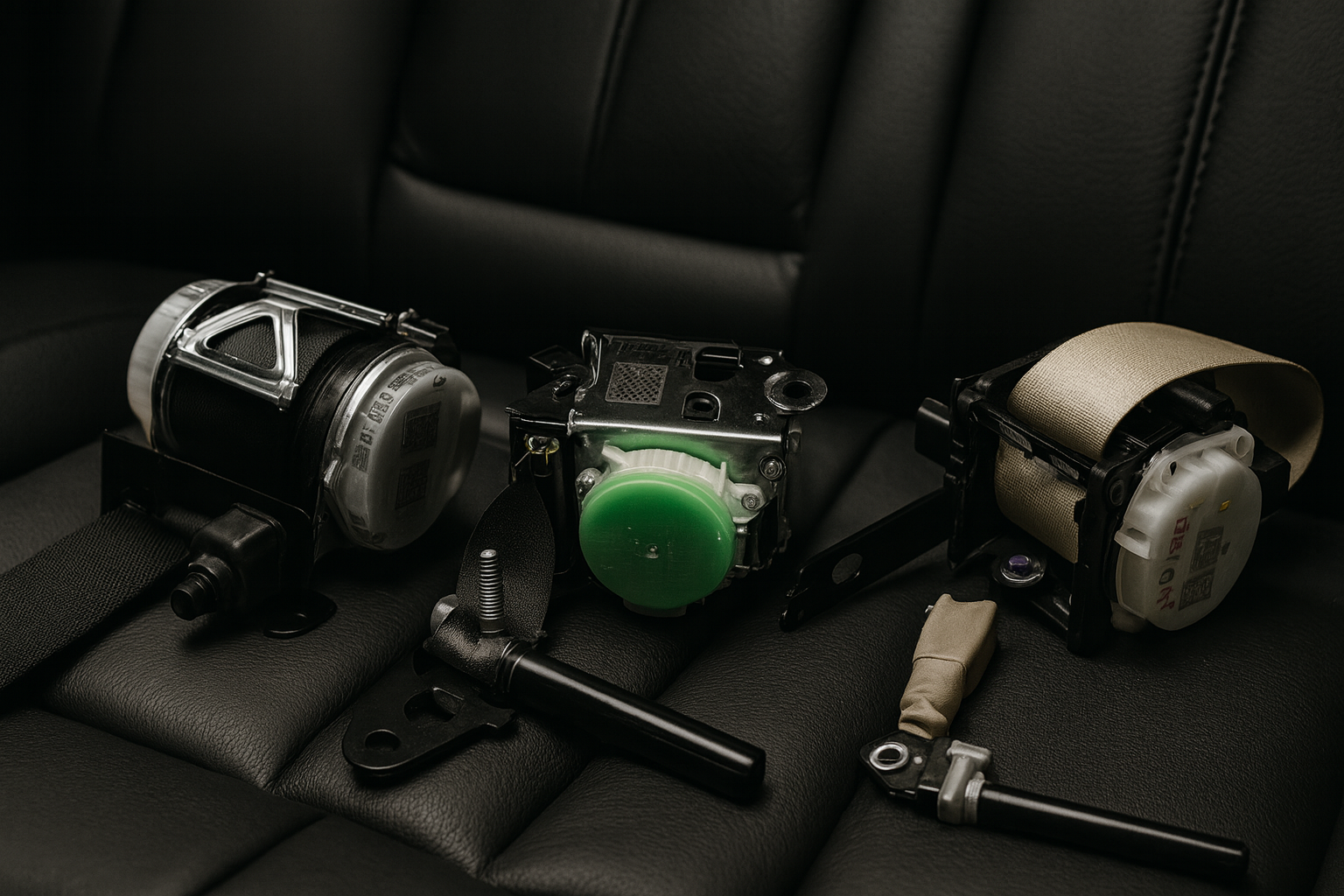
Repair vs. Replacement
-
Repair keeps your original hardware (fitment and mounts stay perfect), fixes the actual failure, and is typically faster and more affordable than hunting new assemblies.
-
Replacement is necessary only when housings are cracked/warped, or contamination is severe beyond service.
-
MyAirbags rebuilds single/dual/triple-stage belts and offers webbing replacement, typically turning jobs around quickly once received.
Repair your seat belt with MyAirbags
Why MyAirbags
-
All common belt types covered: Single, dual, triple stage; retractor, anchor, buckle pretensioners.
-
OEM-grade parts & testing: Repaired belts are bench-tested for retraction force, lock response, and electrical values before return.
-
Fast logistics: Service pages emphasize quick turnaround once received, minimizing downtime.
-
One stop: Add airbag module reset to the same order if your SRS light is on post-accident.
See how MyAirbags service works
The MyAirbags Process (Step by Step)
-
Create your order — Choose seat-belt type/position (front/rear, driver/passenger). If unsure, upload photos; MyAirbags will verify the stage/type.
-
Remove & pack — Disconnect battery; remove belt assemblies carefully; protect connectors; pad all sides; include the order slip.
-
Diagnosis & rebuild — Service pretensioners (retractor/anchor/buckle), renew mechanism, and replace webbing if requested.
-
Testing & QC — Check lock behavior, retraction force, and electrical specs; verify connectors and alignment.
-
Return & reinstall — Refit, torque mounts to spec, reconnect battery, and clear any SRS codes. If the light persists, MyAirbags can help you trace remaining vehicle-side faults.
Fix It Once—Know Your Belt, Choose the Right Repair
Seat belts evolved from single-stage to multi-stage with added pretensioners and load-management features, and in some vehicles, inflatable rear belts—all to make protection smarter and more adaptable. The takeaway for owners is simple: identify the belt type, service the real cause, and keep your original hardware whenever possible. That’s exactly what MyAirbags is set up to do—single, dual, and triple-stage pretensioners plus webbing replacement, with OEM-grade parts and quick turnaround. You’ll avoid the cost/fitment guesswork of replacements and restore the restraint you rely on every time you click in.

 myairbags.com
myairbags.com 888-779-9029
888-779-9029